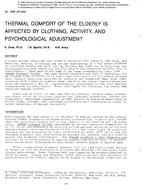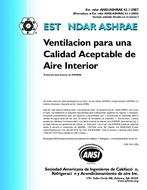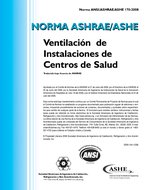Description
A field survey indicated that elderly subjects from Buffalo, New York, and Hamilton, Ontario, of similar sex and age distribution (x bar = 74 .2 years) differed in clothing insulation (0 .74 clo in Buffalo and 0 .88 clo in Hamilton) but maintained the same indoor air (20 .7°C, 69 .2 F) and operative (20 .9°C, 69 .6 F) temperatures. These were at the edge of the lower acceptability limit from ASHRAE Standard 55-1981. The mean thermal sensation was that of neutrality, 0.0 on a scale from -3 (cold) to +3 (hot), and there was a 0.5 difference between mean thermal sensation reported by subjects and Predicted Mean Vote (PMV) measured with a thermal comfort meter based on the Fanger Comfort Equation . This was apparently due to a pyschological adjustment to the cool ambient temperatures in -their homes. Thus, the higher the activity, the better PMV predicted thermal comfort.
There was no effect of sex, age, health, smoking, alcohol usage, income, and house value on clothing insulation ; thermal sensation, indoor air temperature, equivalent temperature, or PMV. Subjective degree of sensitivity to drafts (high, average, low) indicated individuals with corresponding cooler to warmer sensations of thermal discomfort.
Units: Dual
Citation: ASHRAE Transactions, 1986, vol. 92, pt. 2A, Portland, OR
Product Details
- Published:
- 1986
- Number of Pages:
- 14
- File Size:
- 1 file , 1.5 MB
- Product Code(s):
- D-PO-86-2997




